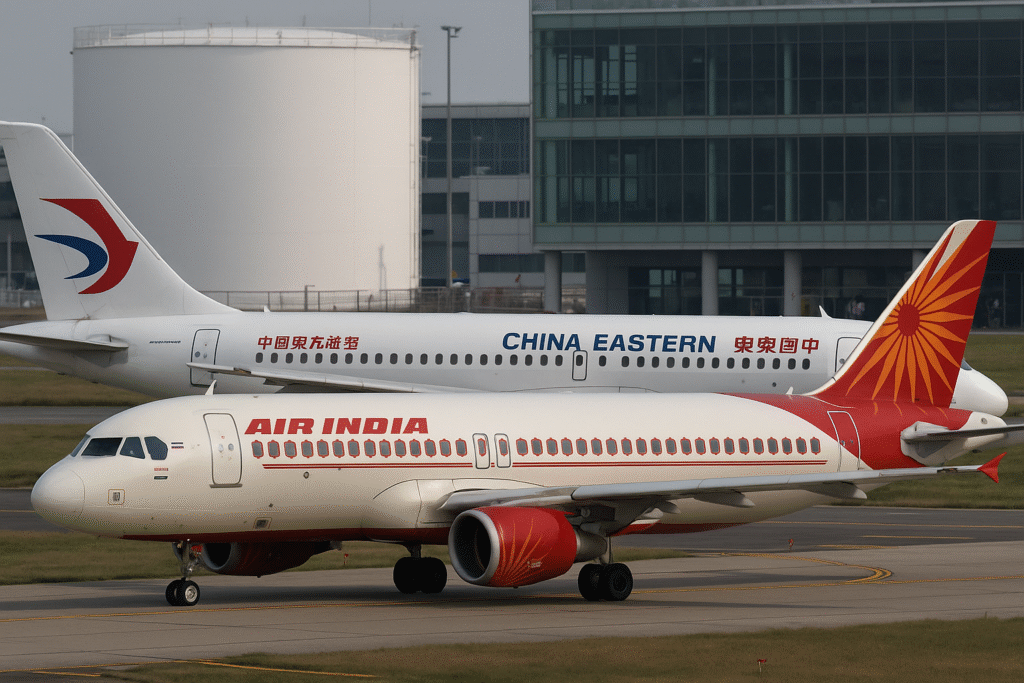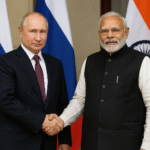By Harshit | 3 October 2025 | New Delhi | 11:00 AM IST
Flights Resume After Years of Suspension
India and China will restart direct flights between the two countries later this month, marking a significant step in the gradual normalization of bilateral ties that were deeply strained after the 2020 border clashes.
India’s Ministry of External Affairs confirmed on Thursday that direct air connectivity will resume for the first time in nearly five years, beginning October 26. Budget carrier IndiGo will launch services between Kolkata and Guangzhou, restoring a vital transport link severed during one of the most turbulent periods in modern India-China relations.
“The resumption of flights will further facilitate people-to-people contact and contribute towards gradual normalisation of bilateral exchanges,” the foreign ministry said in a statement.
Fallout of the 2020 Border Clashes
Flights between India and China were suspended in 2020 following the deadly Galwan Valley clashes in Ladakh, where 20 Indian soldiers and at least four Chinese soldiers were killed. It was the first fatal confrontation on the disputed Himalayan frontier since 1975 and led to a sharp downturn in relations.
The 3,440km (2,100-mile) border remains disputed, with both countries making overlapping territorial claims. The violent incident effectively froze diplomatic, military, and economic exchanges, including the suspension of air connectivity.
In the aftermath, India restricted Chinese investment, banned hundreds of Chinese apps, and tightened security reviews of business partnerships. China, in turn, accused India of disrupting long-standing trade practices.
Signs of Rapprochement
Over the past year, however, both sides have made measured efforts to rebuild trust. Multiple rounds of talks between military commanders and foreign ministry officials have led to partial troop disengagement at several flashpoints along the Line of Actual Control (LAC).
In October 2024, Delhi and Beijing agreed on new patrolling arrangements to reduce the risk of confrontations along the border. China also resumed allowing Indian pilgrims to visit religious sites in Tibet, while India reopened visa services for Chinese tourists earlier this year.
In August 2025, Prime Minister Narendra Modi traveled to China for the Shanghai Cooperation Organisation (SCO) summit — his first visit to Beijing in seven years. On the sidelines, Modi met Chinese President Xi Jinping, with both leaders reiterating their commitment to improving ties.
Domestic and Global Drivers
Diplomatic analysts say the revival of flights reflects not only bilateral efforts but also wider global realignments. India’s recent souring of relations with the U.S. over President Donald Trump’s tariff regime has pushed Delhi to cautiously recalibrate its China policy.
During an August trip to New Delhi, Chinese Foreign Minister Wang Yi urged both countries to view one another as “partners, not rivals.” Soon after, China’s ambassador to India, Xu Feihong, publicly criticized U.S. tariff measures, calling Washington a “bully” — comments that found some resonance in Delhi.
The re-opening of air routes also aligns with China’s efforts to expand regional connectivity under its Belt and Road Initiative (BRI), while India has been seeking to stabilize ties with its largest trading partner despite underlying mistrust.
Symbolism of Air Links
Direct flights are often viewed as a barometer of bilateral warmth, and their absence since 2020 underscored how deeply relations had deteriorated. The restoration of flights, therefore, carries both symbolic and practical importance.
Beyond facilitating travel for businesspeople, students, and families, the flights are expected to revive bilateral trade flows, which exceeded $136 billion in 2024 but remained heavily imbalanced in China’s favor. Experts say the move could also ease cultural and educational exchanges that have been on hold since the Galwan clashes.
However, Indian officials caution that the restoration of flights does not erase unresolved issues. The Himalayan frontier remains tense, with troop deployments still high on both sides. “This is a step forward, but not a resolution of core disputes,” one senior Indian diplomat said.
Looking Ahead
Observers suggest that if the Kolkata-Guangzhou route proves successful, more flights may follow, including the revival of suspended routes between Delhi, Beijing, and Shanghai. Airlines on both sides are reportedly in discussions about expanding schedules in early 2026.
Still, the broader future of India-China relations will depend on progress at the border and whether both governments can manage their strategic rivalry while cooperating on trade and regional issues.
For now, the resumption of flights is being hailed as one of the most tangible indicators of easing tensions since the 2020 freeze, offering cautious optimism that the two Asian giants are inching toward a less confrontational phase in their complex relationship.







